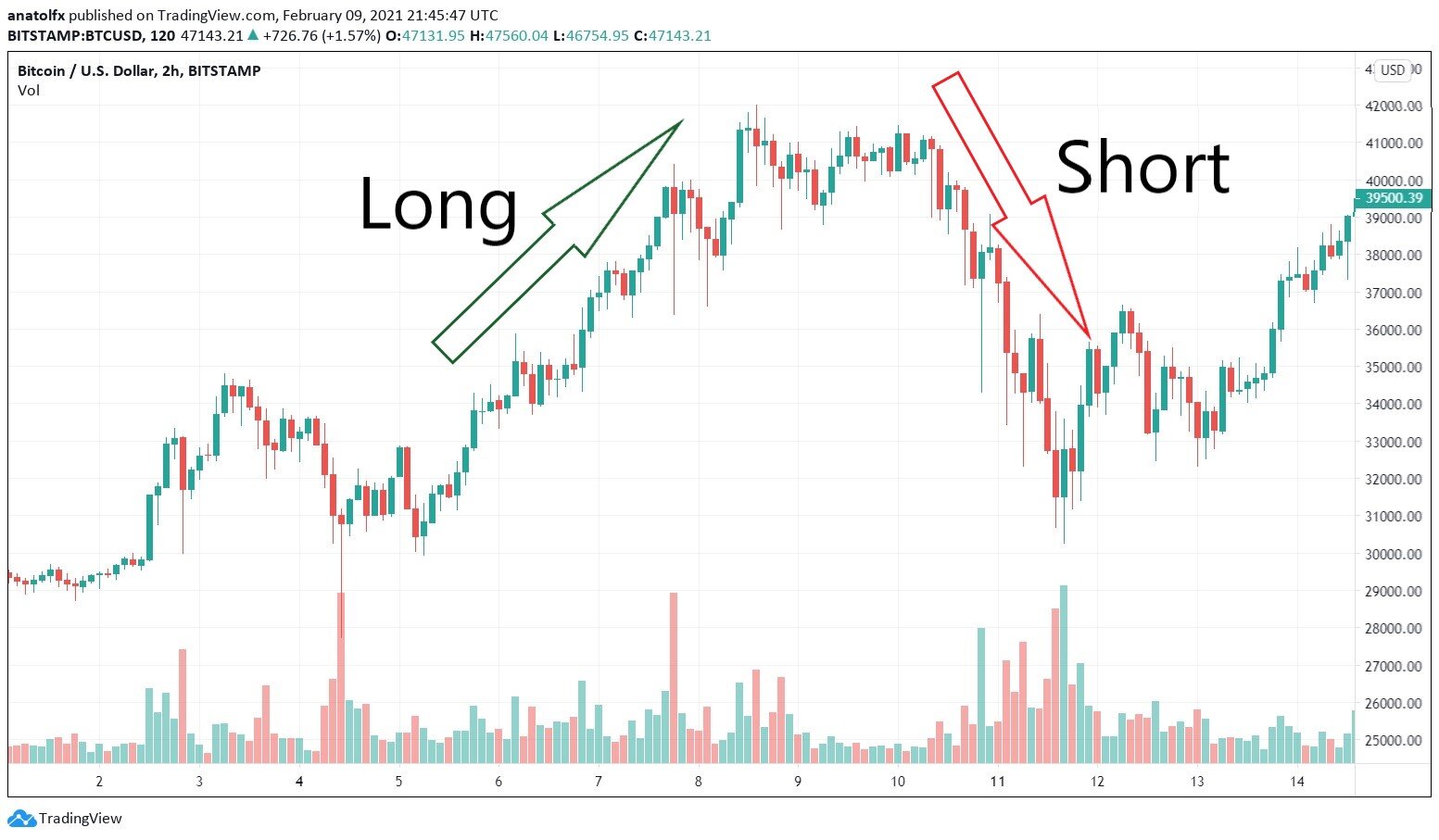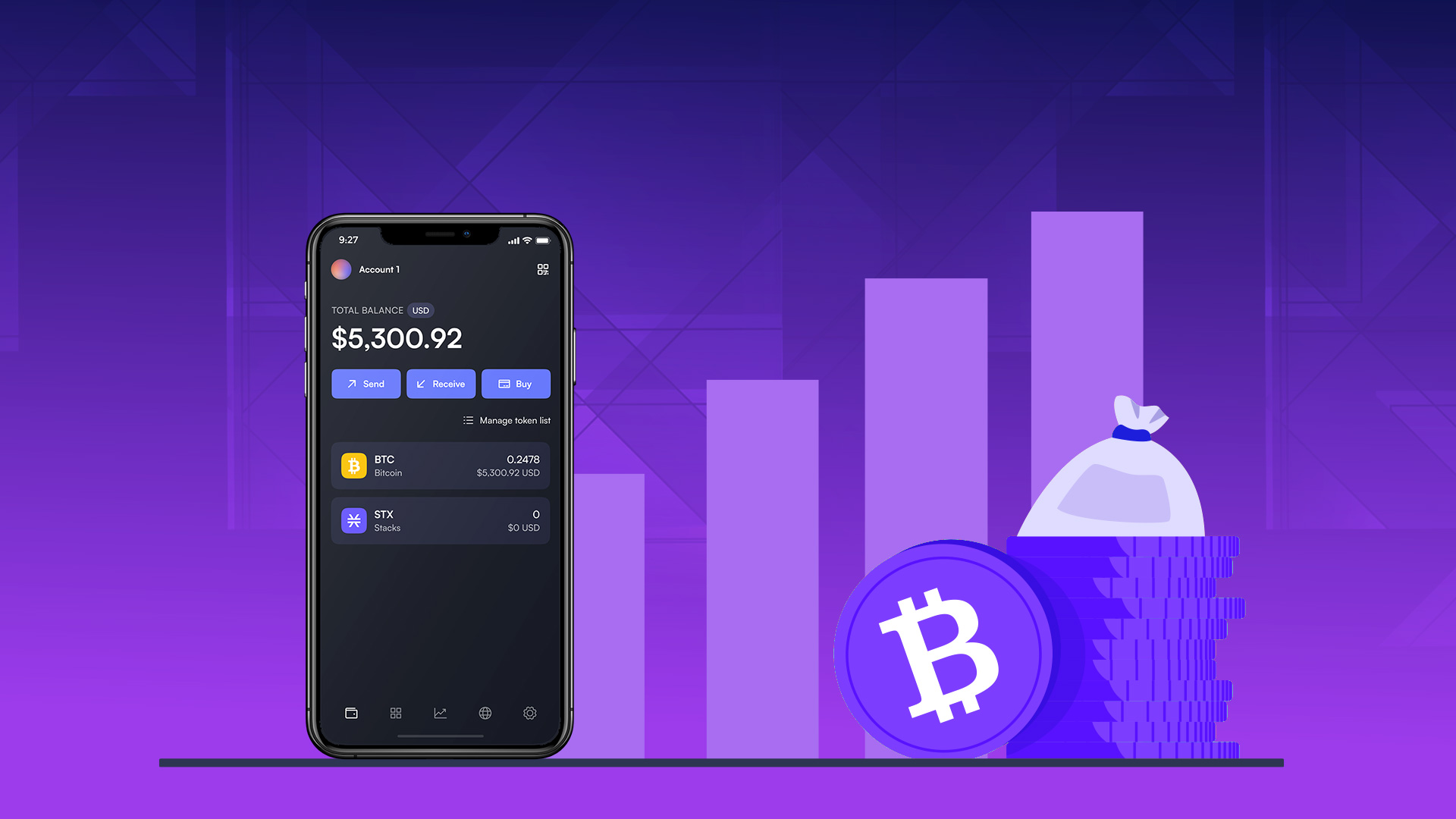Introduction
Welcome to the world of cryptocurrency borrowing! As the popularity of cryptocurrencies continues to rise, so does the need for borrowing crypto assets. Whether you are a seasoned investor or a newcomer to the digital currency realm, understanding how crypto borrowing works can open up a world of possibilities for you.
Crypto borrowing refers to the practice of obtaining cryptocurrencies or stablecoins from lending platforms or individuals and using them for various purposes. This borrowing mechanism offers individuals the opportunity to access digital assets without having to go through the traditional methods of purchasing or mining.
So, why would you want to borrow crypto? Well, there are several reasons why people choose to borrow instead of buying or mining. First and foremost, borrowing crypto allows you to gain exposure to a particular cryptocurrency without actually owning it. This can be beneficial if you believe that the value of a specific crypto asset will rise but don’t want to commit to a long-term investment.
Furthermore, borrowing crypto can be an effective way to diversify your investment portfolio. By borrowing different cryptocurrencies, you can take advantage of multiple market opportunities and potentially increase your overall returns.
Additionally, borrowing crypto can provide you with liquidity when you need it the most. If you find yourself in a situation where you require immediate funds, borrowing against your crypto assets can be a quick and convenient solution.
Now that we understand the benefits of crypto borrowing, let’s dive into how it works. Crypto borrowing typically involves the use of lending platforms or peer-to-peer lending networks. These platforms connect borrowers and lenders, allowing individuals to lend their crypto assets in exchange for interest or fees.
In the next sections, we will guide you through the step-by-step process of borrowing crypto, including choosing the right platform, creating an account, verifying your identity, choosing the type of crypto to borrow, setting your borrowing terms, applying for a loan, and repaying your loan. It’s important to note that while crypto borrowing can be a rewarding experience, it’s crucial to be aware of the risks and considerations involved.
So, if you’re ready to explore the world of crypto borrowing and harness the potential of digital assets, let’s get started! Follow these steps and guidelines to unlock the power of borrowing crypto.
What is crypto borrowing?
Crypto borrowing refers to the practice of obtaining cryptocurrencies or stablecoins from lending platforms or individuals. It allows individuals to access digital assets without owning them outright. In simple terms, it’s like taking a loan, but instead of traditional currency, you borrow digital currencies.
When you borrow crypto, you’re essentially borrowing a certain amount of a specific cryptocurrency or stablecoin for a specific duration. This borrowed asset can be used for various purposes, such as trading, investing, or even as collateral for other financial activities.
One of the key features of crypto borrowing is that it provides individuals with the opportunity to gain exposure to cryptocurrencies without having to purchase them outright. This can be particularly beneficial for those who believe that the value of a certain cryptocurrency will increase but don’t want to make a long-term investment commitment.
The borrowing process typically involves financial platforms or peer-to-peer lending networks that connect borrowers and lenders. These platforms act as intermediaries, facilitating the borrowing and lending of crypto assets. Borrowers can request a loan by specifying the desired amount of crypto and the duration they need it for.
Once the loan request is made, lenders can choose to fund the loan by providing the requested amount of crypto. In return, lenders receive interest or fees for lending their assets. The interest rates and borrowing terms may vary depending on the platform and the specific crypto asset being borrowed.
It’s important to note that crypto borrowing is different from margin trading. In margin trading, traders borrow funds (often a mix of crypto and traditional currency) to trade on an exchange platform. The borrowed funds act as leverage, allowing traders to take larger positions. Crypto borrowing, on the other hand, involves borrowing crypto assets specifically.
Overall, crypto borrowing provides flexibility and accessibility to individuals in the realm of digital currencies. It offers alternatives to traditional methods of obtaining cryptocurrencies and enables individuals to participate in the crypto market without having to fully commit their own capital. It’s important to thoroughly understand the borrowing process and associated risks before engaging in crypto borrowing activities.
Why would you want to borrow crypto?
The world of cryptocurrency offers unique opportunities and advantages that make borrowing crypto an attractive option for many individuals. Here are some reasons why you might want to consider borrowing crypto:
1. Diversification: Borrowing crypto allows you to diversify your investment portfolio. Instead of relying solely on traditional investments, borrowing crypto enables you to gain exposure to a wide range of digital assets. This diversification can potentially enhance your overall investment strategy and mitigate risks.
2. Speculative Trading: If you believe that the value of a particular cryptocurrency will increase in the future, but you don’t want to commit to a long-term investment, borrowing crypto can be a suitable option. By borrowing the desired crypto asset, you can take advantage of short-term price movements and potentially profit from speculative trading.
3. Immediate Access to Funds: Borrowing crypto provides you with liquidity when you need it the most. Whether you require funds for personal expenses or business ventures, borrowing crypto allows you to access immediate funds without having to sell your existing cryptocurrency holdings.
4. Leveraged Trading: Borrowing crypto can serve as a means of leveraging your trading positions. By borrowing additional funds, you can amplify the size of your trades and potentially amplify your profits. However, it’s important to note that leverage trading also comes with increased risks, and proper risk management is crucial.
5. Avoiding Tax Implications: In some jurisdictions, selling cryptocurrencies may trigger taxable events. By borrowing crypto instead of selling it, you may be able to avoid tax implications while still accessing the value of your digital assets. It’s essential to consult with a tax professional to understand the specific tax laws in your jurisdiction.
6. Shorting Crypto: Borrowing crypto also allows you to engage in short selling. If you believe that the price of a particular cryptocurrency will decline, you can borrow the crypto asset, sell it at the current market price, and then repurchase it at a potentially lower price to repay the loan. Shorting crypto can be a way to profit from downward price movements.
7. Collateral for Other Activities: Borrowing crypto can provide you with collateral for other financial activities. For example, you can use the borrowed assets as collateral to secure a loan from a lending platform or participate in decentralized finance (DeFi) protocols that require collateral.
Overall, borrowing crypto offers a range of advantages, including diversification, immediate access to funds, leverage trading opportunities, and the ability to engage in speculative trading or collateralize other activities. However, it’s important to carefully consider the risks associated with borrowing, including interest rates, market volatility, and potential liquidation in the case of margin calls. Conducting thorough research and understanding the terms and conditions of borrowing platforms is vital before engaging in crypto borrowing activities.
How does crypto borrowing work?
Crypto borrowing involves a straightforward process that connects borrowers and lenders in the digital currency world. Here’s an overview of how crypto borrowing works:
1. Lending Platforms: Crypto borrowing is facilitated through lending platforms or peer-to-peer lending networks. These platforms act as intermediaries, connecting borrowers who need crypto assets with lenders who are willing to lend their digital currencies.
2. Loan Requests: Borrowers initiate the borrowing process by submitting loan requests on the lending platform. They specify the amount of crypto they wish to borrow, the duration of the loan, and any other relevant terms and conditions.
3. Lender Selection: Once the loan request is posted, lenders have the opportunity to review the borrowing proposals and choose the ones they want to fund. Lenders can assess the borrower’s profile, loan terms, and any collateral requirements before deciding to lend.
4. Loan Funded: When a lender decides to fund a loan, they transfer the requested amount of crypto to the borrower’s designated wallet. The borrower gains access to the borrowed crypto assets and can use them for their intended purpose.
5. Interest or Fees: In exchange for lending their crypto assets, lenders receive interest or fees. The interest rate can vary based on factors such as the lending platform, the duration of the loan, the supply and demand dynamics, and the crypto asset being borrowed.
6. Collateral: Some borrowing platforms may require borrowers to provide collateral to secure the loan. Collateral can be in the form of other cryptocurrencies, stablecoins, or other assets. If the borrower fails to repay the loan or meet the agreed-upon terms, the lender may have the right to liquidate the collateral to recover their funds.
7. Repayment: Borrowers are typically required to repay the loan within the agreed-upon timeframe. This includes returning the borrowed crypto assets to the lender, along with any accrued interest or fees. The repayment can be made in a lump sum or in installments, depending on the terms of the loan.
8. Loan Completion: Once the borrower has fully repaid the loan, the lender receives their crypto assets back, and the loan is considered complete. Both parties can then proceed with their respective activities, whether it’s lending to other borrowers or utilizing the borrowed assets for trading, investing, or other purposes.
It’s important to note that the specific details and processes may vary across different lending platforms. Some platforms may specialize in certain types of crypto assets or cater to specific borrower profiles. It’s crucial to research and choose a reputable lending platform that aligns with your borrowing needs and preferences.
Furthermore, borrowers should carefully evaluate the terms and conditions of the loan, including interest rates, repayment options, collateral requirements, and any potential fees. Understanding the risks associated with crypto borrowing, such as market volatility and potential liquidation, is essential for making informed borrowing decisions.
By understanding the mechanics of crypto borrowing, borrowers can take advantage of this flexible and accessible method to access digital assets and participate in the ever-evolving world of cryptocurrencies.
Steps to borrow crypto
If you’re ready to borrow crypto and explore the opportunities it offers, follow these steps to get started:
1. Choose the right platform: Begin by researching and selecting a reputable lending platform that suits your borrowing needs. Consider factors such as the available cryptocurrencies, interest rates, fees, loan terms, and the platform’s security measures.
2. Create an account: Sign up on the chosen lending platform by providing the required information. This may include your name, email address, and sometimes, KYC (Know Your Customer) verification documents. Ensure that you choose a strong and unique password to protect your account.
3. Verify your identity: Some lending platforms may require you to complete a verification process to comply with regulatory requirements and prevent fraud. This could involve submitting identification documents and proof of address. Follow the platform’s instructions and provide the necessary documents to complete the verification process.
4. Choose the type of crypto to borrow: Explore the lending platform to identify the available cryptocurrencies for borrowing. Consider factors such as the popularity, liquidity, and potential returns of the crypto assets. Select the one that aligns with your investment goals and risk appetite.
5. Set your borrowing terms: Specify the amount of crypto you wish to borrow and the duration of the loan. Carefully consider the interest rates offered by the platform and ensure that you can comfortably meet the repayment obligations within the agreed-upon timeframe.
6. Apply for a loan: Submit the loan request on the lending platform, providing the required details such as the amount, duration, and any collateral if necessary. Review the terms and conditions before finalizing the loan application.
7. Await loan approval: Once your loan application is submitted, it will be reviewed by lenders on the platform. Lenders will evaluate the loan request and decide whether to fund it based on their own criteria. The approval process duration can vary depending on the lending platform.
8. Receive the borrowed crypto: If your loan request is approved and funded by lenders, you will receive the borrowed crypto assets in your designated wallet or account. Take note of the terms, interest rates, and repayment schedule provided by the lending platform.
9. Repay the loan: Make timely repayments according to the terms of the loan. This typically includes returning the borrowed crypto along with any accrued interest or fees. Failure to repay the loan within the agreed timeframe may result in consequences such as penalties or liquidation of collateral (if provided).
10. Monitor your loan: Stay updated with the progress of your loan and regularly review the status of your repayment obligations. Ensure that you have sufficient funds or assets to meet the repayment requirements and manage any changes in market conditions.
By following these steps and thoroughly understanding the lending platform’s terms, you can successfully borrow crypto assets and seize the opportunities they offer. Remember to exercise caution, conduct thorough research, and only borrow an amount that you can comfortably manage to mitigate potential risks associated with crypto borrowing.
Choosing the right platform
When it comes to borrowing crypto, choosing the right platform is crucial. Here are some factors to consider when selecting a lending platform:
1. Reputation and Security: Research the reputation of the lending platform. Look for platforms with a solid track record, positive user reviews, and a strong commitment to security. Ensure that the platform employs robust security measures to protect your funds and personal information.
2. Supported Cryptocurrencies: Check the list of cryptocurrencies supported by the platform. Choose a platform that offers the specific crypto asset you want to borrow. Consider the platform’s range of offerings and the liquidity of the cryptocurrencies available.
3. Interest Rates: Compare the interest rates offered by different platforms. Lower interest rates can save you money over time, but be cautious of platforms offering unusually low rates, as they may come with hidden fees or risks. Look for transparent and competitive interest rates that align with market standards.
4. Fees and Charges: Consider the fees associated with borrowing on the platform. Some platforms may charge origination fees, late payment fees, or other service charges. Assess the fee structure to understand the total cost of borrowing on the platform and ensure that it fits within your budget.
5. Loan Terms: Evaluate the loan terms provided by the platform. This includes the duration of the loan, repayment schedule, and flexibility regarding early repayment or loan extensions. Choose a platform that offers loan terms that align with your financial goals and borrowing needs.
6. Collateral Requirements: If the platform requires collateral for borrowing, consider the acceptable collateral types and the platform’s collateralization ratio. Evaluate the risks and rewards associated with providing collateral and ensure that you have eligible assets to meet the collateral requirements.
7. Regulation and Compliance: Check if the lending platform operates within regulatory frameworks. Platforms that prioritize compliance with relevant regulations and adhere to industry best practices can provide a higher level of trust and security for borrowers. Look for platforms that are transparent about their regulatory compliance efforts.
8. User Experience: Assess the user experience and interface of the platform. A user-friendly platform will make it easier for you to navigate, apply for loans, and manage your borrowing activities. Consider factors such as account management tools, customer support responsiveness, and mobile accessibility.
9. Platform Liquidity: Consider the platform’s liquidity and its ability to fulfill loan requests promptly. A platform with high liquidity can increase the chances of your loan requests being funded quickly. A lack of liquidity on a platform may result in delayed loan approvals or difficulty in finding lenders.
10. Community and Support: Look for platforms that have an active community and provide reliable customer support. A platform with an engaged community can offer valuable insights and support, while responsive customer support can address any queries or issues that you may encounter during the borrowing process.
By carefully evaluating lending platforms based on the factors mentioned above, you can select the platform that best fits your borrowing requirements, risk tolerance, and financial goals. Remember to conduct thorough research, read reviews, and take advantage of referral programs or bonuses offered by lending platforms to maximize your borrowing experience.
Creating an account
Creating an account is an essential first step when it comes to borrowing crypto. Follow these steps to set up your account on a lending platform:
1. Choose a lending platform: Research and select a reputable lending platform that aligns with your borrowing needs and preferences. Consider factors such as security, supported cryptocurrencies, fees, interest rates, and user reviews.
2. Visit the platform’s website: Go to the website of the chosen lending platform. Look for a “Sign Up” or “Create Account” button usually located prominently on the homepage or in the navigation menu.
3. Fill out the registration form: Click on the “Sign Up” button, and you will be directed to the registration form. Fill in the required information, including your name, email address, and sometimes, a username and password.
4. Create a strong password: Choose a strong and unique password for your account. A strong password typically includes a combination of letters (both uppercase and lowercase), numbers, and special characters. Avoid using easily guessable passwords to ensure the security of your account.
5. Enable two-factor authentication (2FA): Some lending platforms provide the option to enable two-factor authentication for enhanced security. Two-factor authentication adds an extra layer of protection by requiring you to enter a verification code from a separate device or app in addition to your password.
6. Read and accept the terms and conditions: Carefully read the platform’s terms and conditions to understand the rules and obligations associated with using the platform. If you agree with the terms, check the box or click the checkbox indicating your acceptance.
7. Complete the registration: After filling out the registration form and accepting the terms and conditions, click on the “Register” or “Create Account” button to complete the registration process.
8. Verify your email: In some cases, the lending platform may require you to verify your email address. Check your email inbox for a verification email from the platform. Click on the verification link provided in the email to confirm your email address.
9. Set up additional security measures: Once your account is created, consider setting up additional security measures provided by the platform. This may include setting up a PIN code, enabling biometric authentication, or adding additional verification methods.
10. Thoroughly familiarize yourself with the platform: Take the time to explore the platform’s features, dashboard, and account settings. Familiarize yourself with the platform’s user interface and understand how to navigate through the various sections. This will help you make the most of your borrowing experience.
Creating an account on a lending platform is a straightforward process, but it is important to choose a reputable platform and take necessary security precautions. Keep your login credentials secure, regularly update your passwords, and be vigilant against phishing attempts. By creating an account on a lending platform, you can access a world of opportunities for borrowing crypto assets and participate in the evolving digital currency ecosystem.
Verifying your identity
Verifying your identity is a common requirement when using lending platforms or any service that involves financial transactions. Here are the steps typically involved in the identity verification process:
1. Submitting identification documents: The lending platform will usually require you to provide identification documents to verify your identity. This may include a government-issued ID card, passport, or driver’s license. Make sure the documents you submit are valid, clear, and match the information you provided during the registration process.
2. Proof of address: Some platforms also require proof of address to further verify your identity. This can be achieved by providing utility bills, bank statements, or official documents that clearly display your name and address. Ensure that these documents are recent, usually within the last three months.
3. KYC (Know Your Customer) process: The lending platform may require you to complete a KYC process. This involves answering additional questions about yourself, your background, and the source of your funds. The platform may use this information to assess your eligibility for borrowing and to comply with regulatory requirements.
4. Selfie or live photo verification: To further confirm your identity, some platforms may request a selfie or a live photo. This is usually done by taking a picture with your phone or webcam while holding a piece of paper with the platform’s name, current date, and your signature. This helps the platform verify that you are the real person behind the account.
5. Wait for verification: After submitting your documents and completing the required steps, you will typically need to wait for the platform to review and verify your identity. The duration of the verification process can vary depending on the platform’s policies and the volume of verification requests.
6. Follow up if necessary: If the verification process is taking longer than anticipated, or if you have any concerns, don’t hesitate to contact the platform’s customer support. They can provide updates on the status of your verification or assist you with any issues you may encounter along the way.
7. Privacy and security: It is essential to ensure that the lending platform has robust security measures in place. Look for platforms that prioritize privacy protection, data encryption, and secure storage of your personal information. Confirm that the platform has a clear privacy policy detailing how your data will be handled.
8. Compliance with regulations: The identity verification process is often a requirement to comply with anti-money laundering (AML) and counter-terrorism financing (CTF) regulations. By adhering to these regulations, lending platforms help maintain a secure and trustworthy ecosystem for borrowers and lenders alike.
9. Keep your information updated: Once you have successfully completed the identity verification process, ensure that you keep your personal information updated on the platform. Notify the lending platform promptly if there are any changes in your identification documents or address to ensure the accuracy of your profile.
Identity verification is a standard procedure to maintain the integrity and security of lending platforms. By following the platform’s guidelines and providing accurate information, you can establish trust with the platform and gain access to a wide range of borrowing opportunities.
Choosing the type of crypto to borrow
When it comes to borrowing crypto, you have a variety of options to choose from. Here are some factors to consider when selecting the type of crypto to borrow:
1. Investment Goals: Define your investment goals and determine the purpose of borrowing crypto. Are you looking for short-term trading opportunities or long-term investment potential? Different cryptocurrencies have varied risk profiles and potential returns, so choose the one that aligns with your investment objectives.
2. Market Research: Conduct thorough market research to understand the performance and potential of different cryptocurrencies. Analyze factors such as historical price movements, market trends, news, and the technology behind the crypto assets. This research will help you make informed decisions when choosing the type of crypto to borrow.
3. Liquidity: Consider the liquidity of the cryptocurrency you want to borrow. Liquidity refers to the ease of buying and selling the crypto asset in the market. Higher liquidity generally means that there is a larger volume of potential buyers and sellers, making it easier for you to enter or exit a position when needed.
4. Volatility: Cryptocurrencies are known for their price volatility. Evaluate the volatility of the crypto asset you are considering borrowing. Higher volatility can lead to greater potential returns but also accompanies increased risk. Choose a crypto asset with a volatility level that aligns with your risk tolerance and investment strategy.
5. Long-Term Prospects: Assess the long-term prospects of the cryptocurrency. Consider the underlying technology, development team, partnerships, and adoption potential. Different cryptocurrencies have varying levels of maturity, regulatory acceptance, and integration with traditional financial systems.
6. Risk Considerations: Evaluate the risks associated with the crypto asset. Some cryptocurrencies may be more susceptible to regulatory changes, hacking incidents, or market manipulation. Understand and assess these risks before making a decision.
7. Diversification: Consider your existing cryptocurrency portfolio and aim for diversification. Borrowing different types of crypto assets can help spread your risk and exposure across multiple sectors and cryptocurrencies. Diversification can potentially enhance returns and mitigate the impact of any single cryptocurrency’s performance.
8. Availability on Borrowing Platforms: Check if the lending platform you are using supports the crypto asset you wish to borrow. Not all lending platforms offer the same range of cryptocurrencies, so ensure that the platform has the specific crypto asset you want to borrow before proceeding.
9. Associated Costs: Evaluate any associated costs of borrowing a particular cryptocurrency. Different cryptocurrencies may have varying interest rates, fees, and lending terms on different platforms. Consider the costs involved and analyze how they align with your borrowing needs and budget.
10. Future Plans: Consider your future plans for the borrowed crypto asset. If you plan to use the borrowed cryptocurrency for trading, investing, or collateralizing other activities, consider how the chosen crypto aligns with your future plans and objectives.
By weighing these factors, conducting thorough research, and aligning your borrowing needs with your investment goals, you can choose the type of crypto asset that best suits your objectives and risk appetite. It’s important to stay updated with market trends and regularly review your borrowing portfolio to ensure it remains aligned with your goals and market conditions.
Setting your borrowing terms
When borrowing crypto, setting your borrowing terms is a crucial step in determining the conditions under which you will borrow and repay the loan. Here are some key factors to consider when setting your borrowing terms:
1. Loan Amount: Determine the amount of crypto you wish to borrow. Consider your borrowing needs, investment objectives, and risk tolerance when deciding on the loan amount. It’s advisable to borrow an amount that you can comfortably manage to repay within the agreed-upon timeframe.
2. Loan Duration: Set the duration of the loan, indicating how long you would like to borrow the crypto assets. Consider your investment horizon and trading strategy, as well as market conditions and volatility when determining the loan duration.
3. Interest Rate: Choose the interest rate you are willing to pay for the borrowed crypto assets. Interest rates can vary depending on the lending platform, market conditions, and the type of crypto asset being borrowed. It’s important to compare interest rates across different platforms and analyze how they align with your borrowing budget.
4. Collateral: Consider if collateral is required or desired for the loan. Some lending platforms allow borrowers to provide collateral to secure the loan, which can lower interest rates or provide access to higher borrowing amounts. Evaluate the collateral options available and understand the risks associated with providing collateral.
5. Repayment Structure: Determine the repayment structure that best suits your financial situation and cash flow. You may have the option to repay the loan in one lump sum or in installments. Evaluate your ability to meet the repayment schedule and align it with your expected investment returns or income sources.
6. Early Repayment: Consider if you have the flexibility for early repayment. Some lending platforms allow borrowers to repay the loan before the agreed-upon maturity date. Evaluate if early repayment is possible and whether it incurs any additional fees or penalties.
7. Loan-to-Value Ratio (LTV): If collateral is required, determine the loan-to-value ratio. The LTV ratio represents the percentage of the loan value relative to the value of the collateral provided. Understand the platform’s LTV requirements and choose a ratio that suits your risk appetite and borrowing needs.
8. Additional Terms and Conditions: Consider any additional terms and conditions that the lending platform may have. These can include borrower eligibility criteria, withdrawal limits, penalty fees for late payments or defaults, and platform-specific requirements. Ensure that you understand and agree with all terms and conditions before proceeding.
9. Review and Adjust: Carefully review the borrowing terms you have set before finalizing your loan request. Evaluate if they align with your financial goals, risk tolerance, and market conditions. Be prepared to make adjustments if necessary based on the viability and affordability of the terms.
10. Seek Professional Advice: If you are unsure about any aspect of setting your borrowing terms, consider seeking advice from financial professionals or crypto experts. They can provide valuable insights and help you make informed decisions that align with your specific financial situation and goals.
By setting your borrowing terms thoughtfully and aligning them with your financial objectives, you can optimize your borrowing experience and make informed decisions. It’s crucial to thoroughly understand the terms and conditions provided by the lending platform and to conduct proper risk assessments before entering into any borrowing agreements.
Applying for a loan
Once you have chosen a lending platform and set your borrowing terms, it’s time to apply for a loan. Follow these steps to complete the loan application process:
1. Log in to your account: Access your account on the lending platform using your login credentials. Ensure that you have completed any necessary identity verification steps before proceeding.
2. Navigate to the borrowing section: Look for the borrowing or loan section within your account dashboard. This is where you will find the option to apply for a loan.
3. Select desired loan parameters: Specify the loan parameters based on the terms you have set. Enter the loan amount, duration, interest rate, and any other required details as per the platform’s loan application form.
4. Provide collateral (if applicable): If the loan requires collateral, follow the platform’s instructions to provide the necessary collateral. This may involve transferring or locking up the specified collateral assets in a designated wallet or smart contract.
5. Review the loan terms: Double-check the loan terms and conditions presented on the platform. Ensure that they align with the parameters you have set and that you understand all the obligations and responsibilities associated with borrowing from the platform.
6. Submit the loan application: Once you have reviewed the loan terms and are satisfied with the details, submit the loan application. The lending platform will then process your application and determine whether to approve or decline the loan request.
7. Wait for loan approval: The time it takes for loan approval can vary depending on the lending platform and other factors. Be patient and monitor your account for any updates or notifications regarding the status of your loan application.
8. Awaiting lender funding: If your loan application is approved, the platform will arrange for lenders on the platform to fund your loan. Lenders will review and select loan requests based on their own criteria and available funds.
9. Loan disbursement: Once lenders have committed to funding your loan, the lending platform will disburse the borrowed crypto assets to your designated wallet or account. You will then have access to the borrowed funds for your specified purposes.
10. Utilize the borrowed funds: Use the borrowed funds according to your borrowing objectives. Whether you plan to use them for investing, trading, or other activities, ensure that they align with your financial goals and the terms you agreed upon.
Remember, it’s essential to stay updated with any repayments, interest calculations, or necessary actions related to your loan. Regularly monitor your loan status and adhere to the agreed-upon repayment schedule to maintain a positive borrowing relationship with the lending platform and lenders.
Keep in mind that the loan approval process and terms may vary across lending platforms. Familiarize yourself with the specific requirements and guidelines of the platform you are using to ensure a smooth application process.
Repaying your loan
Repaying your loan is a crucial aspect of responsible borrowing. Follow these steps to ensure a smooth and timely repayment process:
1. Understand your repayment schedule: Review the terms of your loan and note the repayment schedule. Understand the frequency of payments, such as whether they are due monthly, quarterly, or in a lump sum at the end of the loan term.
2. Set up reminders: Set up reminders to ensure that you don’t miss any payment deadlines. You can use calendar alerts, notifications on your mobile device, or any other preferred method to stay on top of your repayment obligations.
3. Prepare the repayment amount: Before each payment due date, ensure that you have the necessary funds or crypto assets readily available to repay your loan. Set aside the required amount well in advance to avoid any last-minute liquidity issues.
4. Complete the repayment by the due date: On the specified due date, initiate the repayment process as per the loan agreement. This may involve transferring the borrowed crypto assets back to the lending platform or using an automatic payment system provided by the platform.
5. Early repayment: If you have the option for early repayment and wish to pay off your loan before the agreed-upon term, follow the platform’s instructions to make an early repayment. Be aware of any potential early repayment fees or penalties that may apply.
6. Late repayments: If you are unable to make a repayment by the agreed-upon due date, contact the lending platform immediately. Explain the situation and discuss possible solutions, as late repayments may incur fees or negatively impact your relationship with the platform and lenders.
7. Monitor repayments: Keep track of your repayment progress on the lending platform’s dashboard or account section. Confirm that your repayments are accurately recorded and reflected in your loan balance.
8. Maintain communication: Maintain open communication with the lending platform’s customer support if you encounter any issues or have questions about the repayment process. They can provide guidance and assistance to ensure a smooth repayment experience.
9. Budget for loan repayments: Include loan repayment amounts in your budget to ensure that you can meet your financial obligations. Evaluate your cash flow and incorporate loan repayments into your overall financial plan to manage your finances effectively.
10. Complete the loan repayment: Continue making repayments until you have fully repaid the loan, including any interest or fees. Once the loan is fully repaid, you will have fulfilled your borrowing obligations, and the borrowed crypto assets will be returned to the lenders.
By following these steps and staying proactive in managing your loan repayments, you can fulfill your borrowing responsibilities and maintain a positive relationship with the lending platform. Remember to regularly review your loan status and communicate any changes or challenges with the platform’s support team to ensure a successful loan repayment process.
Risks and Considerations
Before engaging in crypto borrowing, it is essential to understand the risks involved and consider certain key factors. Here are some risks and considerations to keep in mind:
1. Volatility: Cryptocurrencies are known for their high volatility. The value of the crypto assets you borrow can experience significant price fluctuations, which can impact the repayment amount and potentially lead to financial losses.
2. Market Risk: Crypto markets operate 24/7 and are influenced by various factors such as news events, regulatory changes, and market sentiment. Market risk can impact the value of the crypto assets you borrow, potentially affecting your ability to repay the loan or the profitability of your investment.
3. Interest Rates: Interest rates for borrowing crypto can be higher compared to traditional forms of borrowing. It is important to carefully evaluate the interest rates offered by lending platforms and assess their impact on your borrowing costs and overall financial strategy.
4. Platform Risk: The lending platform you choose may be subject to various risks, such as hacking incidents, technical issues, or fraudulent activities. It is crucial to select a reputable platform with strong security measures and a track record of reliable operations.
5. Collateral Risk: If you provide collateral for your loan, there is a risk of losing your collateral if you fail to make timely loan repayments. Understand the collateralization requirements and the potential consequences of defaulting on the loan.
6. Regulatory Considerations: The regulatory landscape surrounding cryptocurrencies is evolving and varies across jurisdictions. Changes in regulations or new legal requirements may impact the borrowing and lending of crypto assets. Stay informed about the legal and regulatory aspects of crypto borrowing in your country to ensure compliance and mitigate potential risks.
7. Counterparty Risk: When borrowing from peer-to-peer lending platforms, there is a risk that a lender may default on their commitment to fund your loan. Platforms typically have measures in place to mitigate this risk, such as distributing loans across multiple lenders. However, it is important to be aware of this potential risk.
8. Liquidity Risk: In times of market stress or low liquidity, you may face challenges in finding lenders or liquidating your borrowed crypto assets. This can impact your ability to access funds when needed or exit positions at desired prices.
9. Market Manipulation: Cryptocurrency markets are susceptible to market manipulation, such as pump-and-dump schemes and price manipulation on smaller exchanges. Be cautious of these activities and conduct thorough research before borrowing or investing in a particular cryptocurrency.
10. Loss of Private Keys: If you’re borrowing crypto and need to manage your own wallet, there is a risk of losing your private keys. Losing access to your wallet can result in the permanent loss of your borrowed crypto assets. Take adequate measures to secure your private keys and backups.
It is essential to conduct thorough research, assess your risk tolerance, and carefully evaluate the platforms and terms before borrowing crypto assets. Only borrow what you can afford to repay and take necessary precautions to mitigate potential risks. Crypto borrowing can offer opportunities but should be approached with caution and a thorough understanding of the associated risks.
Conclusion
Borrowing crypto assets can provide individuals with access to digital currencies, diversification opportunities, and potential investment returns. Understanding the process and considerations involved in crypto borrowing is essential for a successful borrowing experience.
In this guide, we explored the various aspects of crypto borrowing, including what it is, why individuals choose to borrow crypto, and how the borrowing process works. We discussed the importance of choosing the right platform, creating an account, verifying your identity, and selecting the type of crypto to borrow.
We also covered the significance of setting borrowing terms, applying for a loan, repaying the borrowed funds, and considering the risks and considerations associated with crypto borrowing.
Remember, crypto borrowing comes with risks such as market volatility, interest rates, platform security, regulatory changes, and collateral requirements. It is crucial to conduct thorough research, carefully evaluate lending platforms, and assess your own risk appetite and financial goals before engaging in crypto borrowing.
By following the steps outlined in this guide and considering the risks and considerations, you can navigate the world of crypto borrowing with greater confidence. Remember to stay informed, manage your borrowing responsibly, and adapt your borrowing strategy to changing market conditions.
Borrowing crypto assets can offer exciting opportunities in the ever-evolving world of digital currencies. With cautious decision-making, proper risk management, and continuous learning, you can leverage crypto borrowing to explore new avenues and participate in the growing crypto ecosystem.

























